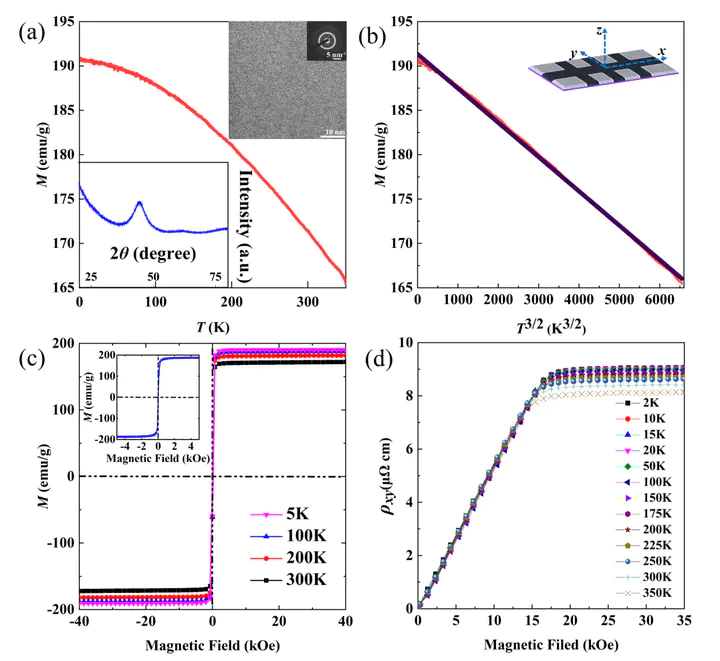Linear magnetization dependence and large intrinsic anomalous Hall effect in Fe78Si9B13 metallic glasses

摘要
The origin of the anomalous Hall effect (AHE) in ferromagnetic metallic glasses (MGs) is far from well understood due to the disordered atomic structure. Here, we report that the AHE is found in Fe78Si9B13 MGs, and the anomalous Hall conductivity (σAH ) has a linear dependence with magnetization (Mz), which is a feature of intrinsic mechanism contribution rather than extrinsic mechanism contribution. Moreover, the σAH normalized by Mz is independent of longitudinal conductivity (σxx ), which also indicates the characteristic of the nondissipative intrinsic mechanism. This intrinsic contribution could be understood from the density of Berry curvature integrated over occupied energies proposed recently for aperiodic materials, and the linear magnetization dependence can be understood from the fluctuations of spin orientation at the finite temperature. In such case, Berry curvature is proportional to spin magnetization in different orientations. Our results indicate experimental signatures to distinguish the intrinsic mechanism in ferromagnetic MGs and confirm that the intrinsic σAH has a large value (505–616 Scm−1 ) in the Fe78Si9B13 MGs.